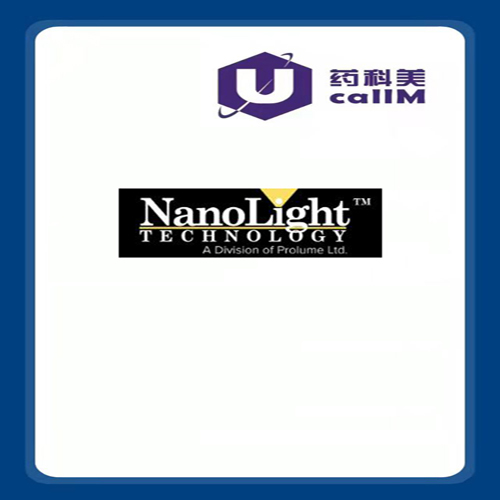Nanolight 产品代理

Nanolight 产品代理
NanoLight®技术的宝贵生命科学用途包括高通量药物发现、功能基因组学、肿瘤成像、放射性同位素替换和分子诊断。一个特别令人兴奋的应用是能够使用NanoLight®的报告系统来“阐明”活细胞内的基因和分子功能,从而为制药公司研究药物活性提供了一种革命性的方法。第二个机会是广泛提供研究人员,他们正越来越多地从放射性试剂转向基于光的报告系统和仪器。NanoLight®技术准备利用这两种加速的市场趋势。
Luciferins & Substrates (NanoFuel)
Assay Reagents
Luciferases & GFPs
Antibodies
Vectors (NanoLights)
Nanolight® Technology is a biotechnology company developing broad applications of natural, light-emitting marine proteins, or marine bioluminescence. The NanoLight division is focused on becoming the leader in high-value reagent & reporter systems for new product development in the pharmaceutical, agrichemical, and research products industries.
Valuable life science uses for NanoLight®’s technology include high-throughput drug discovery, functional genomics, tumor imaging, replacement of radioisotopes, and molecular diagnostics. One particularly exciting application is the ability to use NanoLight®’s reporter systems to “illuminate” gene and molecular function within living cells, allowing pharmaceutical companies a revolutionary method to study drug activity. A second opportunity is to broadly supply researchers who are increasingly moving away from radioactive reagents toward light-based reporter systems and instruments. NanoLight® Technologies is poised to capitalize on both of these accelerating market trends.
NanoLight’s competitive advantage
Our advantage is based on three crucial proprietary positions:
Access to the novel bioluminescent and fluorescent protein molecules.
World’s lowest-cost production technology for coelenterazine (NanoFuel™), necessary for light emission.
World’s largest collection of expression libraries from marine bioluminescent organisms.These proprietary technologies, which NanoLight has already developed or protected by patent filings & trade secrets, permit the company to grow into the dominant supplier of proprietary bioluminescent reagents and reporter systems to the life science markets. NanoLight® can immediately provide partners access to:
Novel GFP genes isolated from Ptilosarcus gurneyi and Renilla Mulleri with distinctive properties including a novel chromophore sequence that differs in 3 of 6 residues from the Aequorea GFP.
Novel marine luciferases cloned from Renilla Mulleri, Pleuromama sp., and Gaussia sp., the latter appears to be brighter than existing Renilla or Firefly systems in mammalian cells.
Pending patents on the novel use of bioluminescent proteins on silicon chips for inexpensive high throughput screening and diagnostic applications.
cDNA libraries from over forty (40) different luminescent organisms for further gene discovery patenting, and licensing.
Proprietary functional screening methods to identify new bioluminescent genes.
This enormous genetic resource represents an outstanding opportunity for leading life sciences companies racing to establish advanced high-throughput screening and diagnostic systems.


